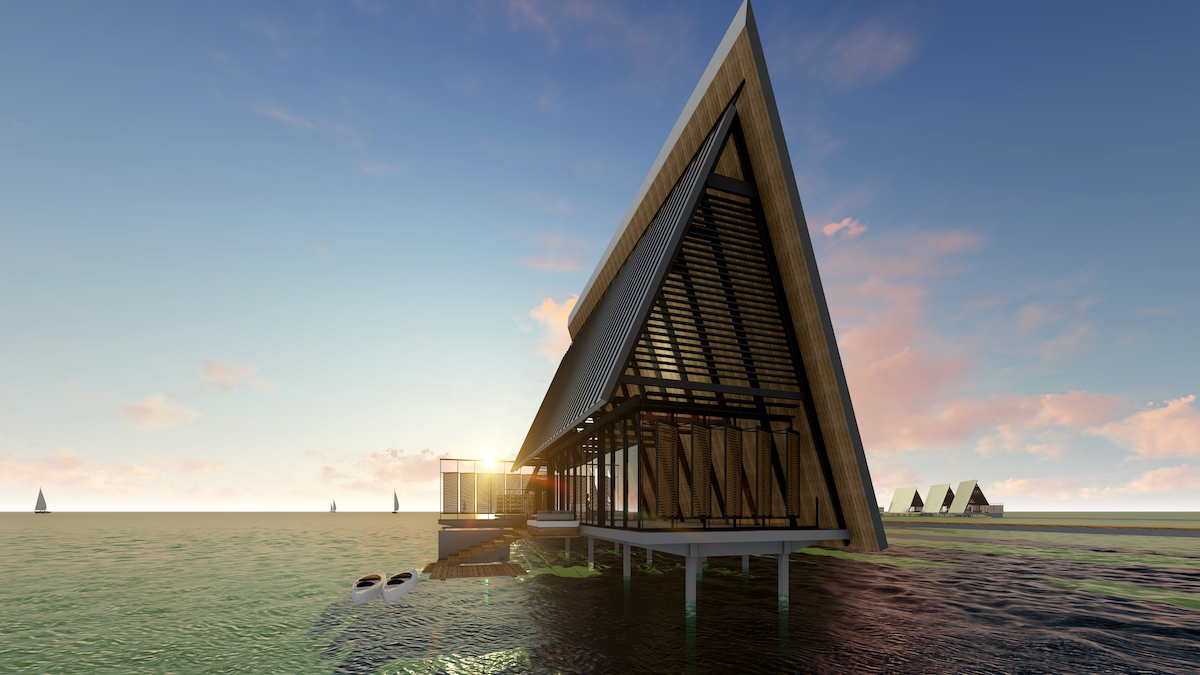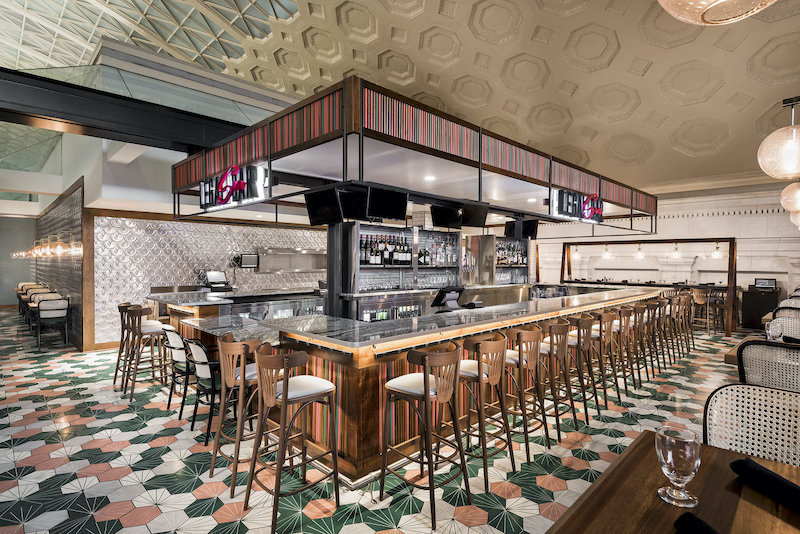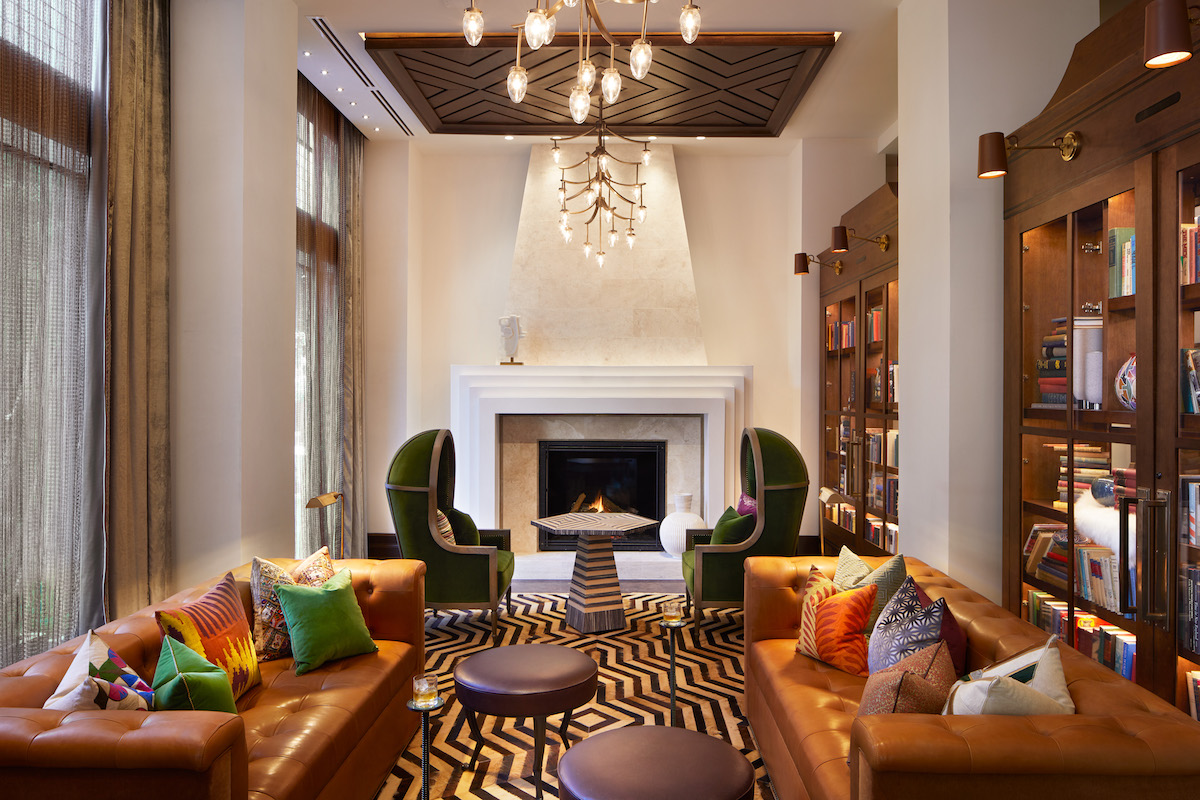Their clients don’t expect the hospitality sector to fully recover from the coronavirus outbreak for at least two years. And while AEC firms serving this sector say they’ve restarted hotel projects that had been put on hold during the pandemic, they also foresee mostly renovation and adaptive reuse, rather than new construction, in their immediate futures.
“Compared to other sectors, hospitality is probably only better than retail at this point,” says Bob Winter, PE, Director of Hospitality for the engineering consultant IMEG.
Even PCL Construction—which as of early June was working on 39 hotel/resort projects, including a first-of-its-kind immersive adventure resort, Star Wars: Galactic Starcruiser at Disney World in Florida—expects the negative impact from COVID-19 to “linger for years,” says Bob Hopferberg PCL’s Vice President of National Business Development.
Some firms say they are girding for a spate of hotel foreclosures over the next 12 to 18 months. Distressed and half-built assets will be in demand among private equity firms, and some of these properties will likely be renovated and converted to multifamily, mixed use, or student housing.

To save time and money, more hotel building teams are turning to prefabrication and modular construction. HKS evaluated more than 15 manufacturers with modular and industrialized construction capabilities to discover the most advantageous solutions for recent design projects such as prefab bungalows for a private island resort. Courtesy HKS
While HKS sees the prospects for new hotel construction in the remainder of 2020 as “bleak,” it is also seeing positive signs for renovations meant to reposition existing buildings. “The mixed-use developments that have a residential component continue to show good health,” say Luis Zapiain, HKS’s Director of Hospitality, and Jennifer Dohrmann-Alpert, its Senior Hospitality Advisor.
“Most hotel owners and operators are looking at strategies that do not require physical architectural changes,” observes Nancy J. Ruddy, Founding Principal and Director of Interior Design with CetraRuddy in New York. She’s seeing hotels planning soft reopenings that span over three months, after which owners will reassess what’s working over six- and 12-month intervals until a vaccine is available.
Renovation projects to make hotel guests feel safe
Hotel survival is all about rebuilding guests’ confidence about their safety, and their comfort about traveling again. HKS created a document that provides guidelines for welcoming guests back, with a priority on safety and wellbeing. “Operational procedures have been changed, likely permanently, affecting everything from check-in/registration, housekeeping, room service, food and beverage, and use of amenities,” adds Tom Philippi, AIA, NCARB, LEED AP, Design Principal at SmithGroup’s Dallas office.
Hotels desperate to win back customers are now engaged in what Randy Shelly, Executive Vice President–Hospitality for Shawmut Design and Construction, calls a “competition for cleanliness.” As a result, Shelly expects the renovation cycle for existing hotels to shorten after the pandemic, which might ultimately help hotels increase their revenue per available room.
The biggest change occurring at hotels is the increasing importance of their food and beverage offering. “When designing hotels, one of the first questions is: How can we bring F+B into this space? We expect to see more areas in the hotel become flexible spaces to dine informally. The entire hotel could become a great F+B experience,” says Bob Neal, a Principal with Cooper Carry’s Hospitality Studio. He, like other AEC sources, is seeing a spurning of buffets (which are highly profitable but can be infection traps) in favor of prepackaged room service and grab-and-go areas in lobbies and corridors.
The other prominent renovation trends for hotels is creating a touchless environment that minimizes the spread of air- and liquid-borne diseases. For that effort, “technology is coming front and center,” says Ruddy. Guest rooms will include enhanced in-room technology to accommodate guests who want to spend more time in their rooms working or relaxing.
In June, the hotelier citizen M introduced safety standards that include a mobile app that allows guests to create a keycard they can use to get into their rooms, order food, and control their in-room environment. The app streamlines contactless check-in/out, payments, and in-room service requests.
“We see hotels and resorts developing more ‘touchless’ interactions at all levels,” says Chad Wisler, PE, LEED AP BD+C, Managing Principal at Vanderweil Engineers’ Boston office. These interactions range from front-of-house entrances to guests’ use of their mobile devices for their virtual room keys, charge accounts, and menu and amenity selections. “COVID-19 has forced this sector (and clients) to adopt this new paradigm,” says Wisler.
Technology will also play a bigger role in hotel sanitization. For example, PCL has developed what it calls a Hygiene Lighthouse, which deploys Far-Ultraviolet bulbs that can kill 99.99% of pathogens quicker and more efficiently than other UV or traditional methods for cleaning rooms, housekeeping carts, and bell carts.
But what hotel owners also need to be cautious about, warns IMEG’s Winter, is not allowing technology and cleanliness to make their properties bland, sterile, and impersonal in ways that dissipate “the social aspects that drive the business.”
Hotel design: A bigger push for prefab and modular options
As the hospitality sector claws its way back to something resembling normal, certain venue types could recover faster. Philippi of SmithGroup cites extended-stay and apartment-style hotels. Wisler of Vanderweil Engineers—which now leans toward design-assist delivery—thinks experience-based resorts and wellness retreats will be in demand. Shelly of Shawmut Design and Construction says hotels in New York are looking at their properties as “mini mixed-used developments” and are focusing on using “engaging public spaces” to connect with their surrounding neighborhoods. Shawmut is also seeing hotels in southern California redesigning spaces to activate revenue; he points specifically to the Four Seasons Westlake Village that turned lobby space into a bar and restaurant area.
CetraRuddy and SmithGroup are among the AEC firms that see connections to the outdoors and nature becoming more common to hotel/resort design and wellness programming.
ALSO SEE: Why clean is the new green in the U.S. hospitality sector

Three design firms share their takes on what will make customers more comfortable about returning. Read the article.
While luxury hotels foundered during the pandemic, firms like Shawmut and HKS believe affluent guests will eventually return to these venues. “On the bright side, investors are still buying hotels, and the focus has shifted to ultra-luxury or to limited service/select service properties,” observe Zapiain and Dohrmann.
They’re also seeing modular design “making waves” in the hospitality sector. HKS has been working with suppliers “to refine and develop their hospitality products” for recent projects that include prefab bungalows for a private island resort and a fully modular urban hotel in Anchorage, Alaska. HKS estimates that prefabricating guest rooms in factories can reduce a project’s schedule time by up to 50% and its construction budget by 20%.
Prefabrication “is a major push” in hospitality, concurs Matt Murphy, Commercial Core Market Leader with DPR Construction. Applications range from full modular units to prefab bathrooms, electrical rooms, and exterior skin systems. For AC Marriott in Phoenix, DPR used a prefab structural system from Digital Building Components; the JW Marriott in Charlotte, N.C., features prefab bathrooms from SurePods. “We anticipate this trend will increase, post-pandemic, as contractors look at ways to limit on-site labor and the challenges of COVID-19 prevention measures such as social distancing,” says Murphy.
Related Stories
| Aug 11, 2010
Triangular tower targets travelers
Chicago-based Goettsch Partners is designing a new mixed-use high-rise for the Chinese city of Dalian, located on the Yellow Sea coast. Developed by Hong Kong-based China Resources Land Limited, the tower will have almost 1.1 million sf, which includes a 377-room Grand Hyatt hotel, 84 apartments, three restaurants, banquet space, and a spa and fitness center.
| Aug 11, 2010
Spa resort in harmony with mountain setting
The Sparkling Hill Resort and Wellness Hotel in Vernon, B.C., looks as if it was chiseled out of bedrock and jutting from the mountainside. Designed by the Victoria, B.C., office of Cannon Design, the 240,000-sf resort has 152 guest rooms with floor-to-ceiling windows and spa-like bathrooms, as well as a signature 20,000-sf whole-body wellness spa with treatment rooms designed to feel like they...
| Aug 11, 2010
Expanding retail complex is LEED pre-certified
The Promenade at Coconut Creek in Broward County, Fla., a live-work-play shopping and lifestyle center, is being expanded by 105,000 sf. When phase II of the 335,000-sf project is complete, the facility will house 75 retailers, restaurants, and related services, making it one of the largest mixed-use projects in northern Broward County.
| Aug 11, 2010
CityCenter projects get LEED Gold
MGM Mirage and Infinity World Development have received LEED Gold certification for the first three CityCenter projects: the ARIA Resort hotel tower, ARIA Resort convention center and theater, and the Vdara Hotel (above). The CityCenter developers anticipate Gold or Silver LEED certification for the project's remaining developments, which include a Mandarin Oriental hotel, a 500,000-sf retail a...
| Aug 11, 2010
Philadelphia cancer center seeks LEED certification
The New York office of Thornton Tomasetti provided structural engineering services for the Ruth and Raymond Perelman Center for Advanced Medicine in Philadelphia, a $232 million medical research center and advanced treatment center for cancer and cardiovascular disease. Designed by a joint venture of Perkins Eastman Architects and Rafael Vinõly Architects, the 340,000-sf facility will hous...
| Aug 11, 2010
High-level NICU opens in Washington, D.C.
Design to the highest distinction available by the American Academy of Pediatrics, the new Level IIIC neonatal intensive care unit (NICU) at Children's National Medical Center in Washington D.C., is equipped to care for the sickest premature babies, including those that require open-heart surgery. The 54-bed facility, designed by Karlsberger with KLMK Group as space planner, is four times large...
| Aug 11, 2010
RMJM unveils design details for $1B green development in Turkey
RMJM has unveiled the design for the $1 billion Varyap Meridian development it is master planning in Istanbul, Turkey's Atasehir district, a new residential and business district. Set on a highly visible site that features panoramic views stretching from the Bosporus Strait in the west to the Sea of Marmara to the south, the 372,000-square-meter development includes a 60-story tower, 1,500 resi...
| Aug 11, 2010
San Bernardino health center doubles in size
Temecula, Calif.-based EDGE was awarded the contract for California State University San Bernardino's health center renovation and expansion. The two-phase, $4 million project was designed by RSK Associates, San Francisco, and includes an 11,000-sf, tilt-up concrete expansion—which doubles the size of the facility—and site and infrastructure work.
| Aug 11, 2010
'Feebate' program to reward green buildings in Portland, Ore.
Officials in Portland, Ore., have proposed a green building incentive program that would be the first of its kind in the U.S. Under the program, new commercial buildings, 20,000 sf or larger, that meet Oregon's state building code would be assessed a fee by the city of up to $3.46/sf. The fee would be waived for buildings that achieve LEED Silver certification from the U.
| Aug 11, 2010
Five-star resort breaks ground on the Black Sea
Construction work has commenced on a five-star resort and leisure destination along the Black Sea coast in Batumi, Georgia. The RTKL-designed resort consists of two towers rising 86 and 58 meters over a two-story podium. The larger tower contains 250 guestrooms and suites while the smaller tower offers 78 residential apartments.







